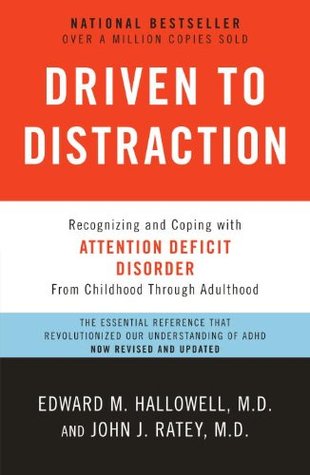More on this book
Community
Kindle Notes & Highlights
Read between
July 24 - August 7, 2019
The most important step in determining whether one has ADD is sitting down and talking to somebody who is knowledgeable in the field.
Job history. Have you seen a pattern of underachievement, trouble with bosses, frequent job changes, or trouble with deadlines and procrastination? Do you have a tendency to be a maverick at work? Are you particularly innovative or creative? Are you a hard worker? Is saying or doing the wrong thing at the wrong time a recurring problem?
However, based upon our clinical experience with hundreds of adults with ADD, we set forth the criteria in Table II for making the diagnosis of ADD in adults (this is an abbreviated version of the symptoms discussed in chapter 3).
In addition to the criteria above, also rate yourself using Paul Wender’s Utah Criteria. (These are referred to as the Utah Criteria because Wender is professor of psychiatry at the University of Utah School of Medicine.)
Difficulty getting organized.
Chronic procrastination or trouble getting started.
Many projects going simultaneously; trouble with...
This highlight has been truncated due to consecutive passage length restrictions.
An intolerance of boredom.
Easy distractibility, trouble focusing attention, tendency to tune out or drift away in the middle of a page or a conversation, often coupled with an ability to hyperfocus at times. 9. Often creative, intuitive, highly intelligent.
Trouble in going through established channels, following ...
This highlight has been truncated due to consecutive passage length restrictions.
Impatient; low tolerance of frustration. 12. Impulsive, either verbally or in action, as in impulsive spending of money, changing plans, enacting new schemes ...
This highlight has been truncated due to consecutive passage length restrictions.
Mood swings, mood lability, especially when disengaged from a person or a project. 16. Physical or cognitive restlessness. 17. A tendency toward addictive behavior.
Inaccurate self-observation.
If you think you may have ADD, first consult someone who has experience with the condition. Child psychiatrists, neurologists, psychologists, and pediatricians are the professionals most likely to have developed expertise in recognizing ADD. Be sure to ask whomever you consult if they have experience in diagnosing and treating ADD, and whether that experience is with children, adults, or both.
Once the diagnosis has been made, the next step is to learn as much as possible about the condition. The more you know, the better you will be able to construct your treatment to meet your own needs,
The treatment of ADD is not passive, not something one reclines to receive. Rather, the treatment is an active process involving work and study.
In adults the process of education is straightforward: through reading, attending lectures, talking to experts and to others who have ADD, you gradually learn as much as you can about it.
And one rearranges the nuts and bolts of one’s daily life, setting up means of improved organization and control; this is the external restructuring.
Structure is central in the treatment of ADD. The word “structure” is a homely one, perhaps conjuring up dull images of blueprints or two-by-fours. However, structure can dazzle with its results.
Structure refers to essential tools like lists, reminders, notepads, appointment books, filing systems, Rolodexes, bulletin boards, schedules, receipts, IN- and OUT-boxes, answering machines, computer systems, alarm clocks, and alarm watches.


